How to Identify Common Tree Species in Your Area
- September 9, 2024
- 0 comment
Identifying common tree species in your area can be a rewarding experience, whether you’re a budding naturalist, a professional botanist, or simply someone who enjoys the outdoors. Trees play a crucial role in our ecosystems, providing habitat for wildlife, contributing to the climate, and enhancing the aesthetic appeal of our surroundings.

This guide aims to provide you with the tools and knowledge necessary to identify common tree species in your area effectively.
Table of Content
- Understanding the Importance of Tree Identification
- Basic Characteristics of Trees
- Tools for Tree Identification
- Identifying Trees by Habitat
- Common Tree Species in North America
- Advanced Tree Identification Techniques
- Engaging with Local Communities
Understanding the Importance of Tree Identification
Tree identification is not only an educational endeavor but also an essential skill for various practical applications. Understanding the trees around you can help in appreciating the natural world, supporting conservation efforts, and even contributing to local science projects. Moreover, knowing the types of trees in your area can assist in landscape management, ensuring that native species are preserved while non-native, potentially invasive species are controlled.
Why Tree Identification Matters
Identifying trees is critical for environmental conservation. Native tree species support local wildlife, maintain soil health, and contribute to the overall biodiversity of the region. In contrast, non-native species can sometimes outcompete local flora, leading to reduced biodiversity and altered ecosystems. By identifying and understanding the trees in your area, you can contribute to efforts that promote ecological balance and protect native species.
Ecological and Cultural Significance
Trees are often deeply intertwined with the culture and history of a region. Many indigenous cultures have specific trees that play a significant role in their traditions and practices. In addition, trees like the oak, maple, and redwood have become symbols of specific regions or nations, representing strength, endurance, and longevity. Understanding these cultural connections enhances the significance of tree identification beyond just scientific curiosity.
Basic Characteristics of Trees
Trees can be identified through several key characteristics, including leaves, bark, flowers, fruits, size, and overall shape. Familiarizing yourself with these features will make the identification process easier and more accurate.
Leaves
Leaves are one of the most reliable indicators when it comes to identifying trees. Their shapes, sizes, arrangements, and colors provide vital clues.

- Leaf Shapes and Margins: Leaves can be simple (a single leaf blade) or compound (multiple leaflets arranged on a single stem). The edges of the leaves, or margins, can be smooth, serrated, lobed, or wavy, each pointing to different tree species.
- Simple vs. Compound Leaves: Simple leaves have a single, undivided blade, like those of an oak or maple. Compound leaves, like those of ash or walnut, consist of multiple leaflets attached to a single central stem.
- Seasonal Leaf Changes: In deciduous trees, leaves change color and fall off in autumn. This seasonal change is often species-specific and can aid in identification. For instance, the brilliant red of a maple or the golden yellow of a birch are distinctive.
Bark
The bark of a tree is another crucial characteristic that varies widely between species.

- Texture and Color: Bark can be smooth, rough, flaky, or furrowed. Its color might range from white (as in birch) to dark brown or even gray. These variations can help in distinguishing between species, especially in winter when leaves are absent.
- Differences in Young vs. Mature Bark: Bark texture and appearance can change as a tree matures. Young trees may have smoother bark, which becomes rougher or more ridged with age. Recognizing these changes is important in identifying both juvenile and mature specimens of the same species.
Flowers and Fruits
Flowers and fruits provide another layer of identification, particularly during certain seasons.

- Flowering Patterns: The timing, color, and arrangement of flowers can be unique to specific species. For example, dogwoods are known for their early spring blooms, while magnolias display large, fragrant flowers.
- Fruit Types: Different trees produce various types of fruits, such as berries, nuts, or cones. The size, shape, and structure of these fruits are often species-specific. For example, acorns are characteristic of oaks, while samaras (winged seeds) are typical of maples.
Tree Size and Shape
The overall size and shape of a tree are also key indicators.
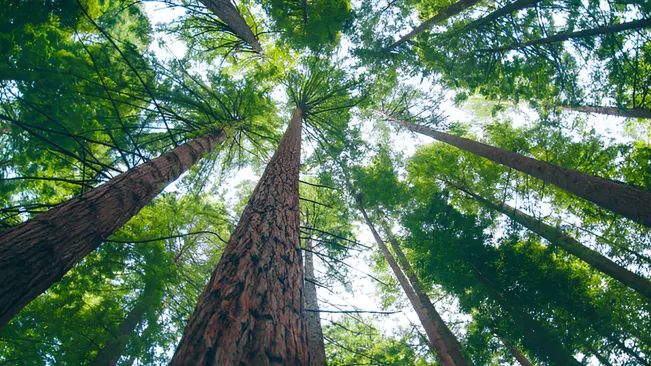
- Height and Canopy Structure: The typical height of a tree and the structure of its canopy (the arrangement of leaves and branches) can be distinctive. For instance, the tall, straight trunk and conical shape of a pine tree are quite different from the broad, spreading canopy of an oak.
- Growth Habits: Trees can have various growth forms, such as columnar (narrow and tall), spreading (wide canopy), or weeping (branches drooping). These habits help in distinguishing between species, particularly in an urban setting where many trees are of similar age but different species.
Tools for Tree Identification
While traditional knowledge and observational skills are fundamental, modern tools can significantly enhance your ability to identify trees.
Field Guides and Mobile Apps
Field guides are invaluable resources for tree identification, providing detailed descriptions, photographs, and illustrations.

- Popular Tree Identification Apps: Mobile apps like “Leafsnap,” “iNaturalist,” and “Seek by iNaturalist” allow users to take photos of leaves, bark, or flowers and get instant identification suggestions.
- Recommended Field Guides: Some popular guides include “Peterson Field Guide to Eastern Trees” and “The Sibley Guide to Trees,” which cover a wide range of species with detailed information.
Collecting Samples
Collecting samples can be a practical approach when identifying trees, particularly for leaves, bark, and small twigs.

- Ethical Sampling Techniques: It’s important to collect samples without harming the tree. Take only what is necessary and avoid damaging young or endangered trees.
- Proper Preservation Methods: Pressing leaves in a book or preserving small twigs in a ziplock bag can keep your samples intact for later study.
Photographic Identification
Photography can be a powerful tool in tree identification, especially for recording features that might change with the seasons.

- How to Take Clear Photos: Focus on key identifying features like leaves, bark, and fruits. Ensure the lighting is good and the image is sharp.
- Using Photos to Compare with Guides: Once you have clear photos, compare them with images in field guides or online databases to confirm the species.
Identifying Trees by Habitat
Different habitats support different types of trees. Understanding the typical tree species found in various environments can narrow down your identification efforts.
Urban Areas
Urban environments, including streets, parks, and gardens, often feature a mix of native and introduced species.

- Common Street Trees: Species like the London plane, honey locust, and ginkgo are popular in urban areas for their resilience and aesthetic appeal.
- Trees in Parks and Gardens: In landscaped areas, you might find a broader variety of species, including ornamental trees like Japanese maples or flowering dogwoods.
Forests and Woodlands
Forests and woodlands host a wide variety of tree species, often organized into canopy (tallest trees) and understory (smaller trees and shrubs).

- Dominant Tree Species: Depending on the region, you might find forests dominated by species like oak, hickory, or pine.
- Understory vs. Canopy Trees: Understanding whether a tree is typically found in the understory or as part of the canopy can help narrow down species. For example, dogwoods are commonly understory trees, while pines are usually canopy trees.
Wetlands and Riparian Zones
Areas near water bodies have unique tree species adapted to wet conditions.
Wetland Tree Species
Trees like the bald cypress, willow, and cottonwood thrive in wetlands. Their adaptations to waterlogged soils make them distinctive.

Identifying Trees near Water Bodies
Pay attention to the proximity to water and look for species that prefer these conditions, like sycamores and river birches.

Common Tree Species in North America
North America boasts a wide variety of tree species, both deciduous (leaf-shedding) and coniferous (cone-bearing).
Deciduous Trees
Deciduous trees are known for shedding their leaves annually and often have broad leaves.

- Maple (Acer spp.): Recognizable by their lobed leaves and winged seeds, maples are common in many parts of North America.
- Oak (Quercus spp.): Oaks have lobed leaves and produce acorns. They are widely distributed across the continent.
- Birch (Betula spp.): Birches are known for their distinctive white or silver bark and serrated leaves.
Coniferous Trees
Conifers, often evergreen, have needle-like or scale-like leaves and produce cones.

- Pine (Pinus spp.): Pines are easily recognized by their needle clusters and long, slender cones.
- Spruce (Picea spp.): Spruces have shorter needles and are often used as Christmas trees.
- Fir (Abies spp.): Firs have softer, flat needles and upright cones.
Native vs. Introduced Species
Understanding whether a tree species is native or introduced can provide context for its ecological role.
- Characteristics of Native Trees: Native trees have evolved in the local environment and often support local wildlife better than introduced species.
- Common Introduced Species: Some introduced species, like the Norway maple or the tree of heaven, have become common in North America and can sometimes be invasive.
Advanced Tree Identification Techniques
For those looking to delve deeper into tree identification, advanced techniques involve understanding tree anatomy and even molecular analysis.
Tree Anatomy and Morphology
A deeper understanding of tree anatomy, such as the structure of leaves, twigs, and roots, can aid in more precise identification.
- Understanding Tree Parts in Detail: Learning about specific anatomical features, like leaf venation patterns or root systems, can help in distinguishing closely related species.
Genetic and Molecular Identification
Modern techniques like DNA barcoding offer precise identification methods, particularly for species that are difficult to distinguish based on appearance alone.
- DNA Barcoding in Trees: By analyzing genetic material, scientists can accurately identify tree species, even from small samples like leaves or bark.
Engaging with Local Communities
Tree identification can be a communal activity, offering opportunities to learn and share knowledge with others.
Joining Tree Walks and Identification Groups
Many communities offer tree walks or identification groups where you can learn from experts and other enthusiasts.
- Benefits of Group Learning: Group activities provide a social way to learn and can offer access to experienced naturalists.
- Resources for Finding Local Groups: Look for local nature centers, botanical gardens, or environmental organizations that host these events.
Citizen Science and Tree Identification
Participating in citizen science projects can enhance your skills while contributing valuable data to scientific research.
- Contributing to Local and National Databases: Many projects, like Project BudBurst or iNaturalist, allow you to submit your tree observations to national databases, helping to track species distribution and health.
Conclusion
Identifying common tree species in your area is a fulfilling and educational pursuit that connects you with the natural world. By understanding the basic characteristics of trees, utilizing modern tools, and engaging with your local community, you can enhance your ability to recognize and appreciate the diversity of tree species around you.
Frequently Asked Questions (FAQs)
- What are the easiest ways to identify a tree?
The easiest ways to identify a tree include examining its leaves, bark, flowers, and fruits. Leaf shape, size, and arrangement are particularly helpful, as well as the texture and color of the bark. Seasonal changes, such as fall foliage color, can also provide clues. - How can I tell the difference between deciduous and coniferous trees?
Deciduous trees typically have broad, flat leaves and shed them annually in the fall. Coniferous trees, on the other hand, usually have needle-like or scale-like leaves and produce cones. Most conifers are evergreen, retaining their leaves year-round. - Are there mobile apps available for tree identification?
Yes, several mobile apps can assist with tree identification, such as “Leafsnap,” “iNaturalist,” and “Seek by iNaturalist.” These apps allow you to take photos of leaves, bark, or flowers and receive suggestions on the tree species. - What should I look for when identifying a tree by its bark?
When identifying a tree by its bark, consider the texture (smooth, rough, scaly, or furrowed), color, and any unique patterns. Bark can vary significantly between species and even as the tree ages, so both young and mature bark characteristics are important. - Can I identify a tree by its fruit alone?
Yes, fruit can be a distinctive feature for identifying trees. The shape, size, color, and type of fruit (such as acorns, berries, or cones) can help narrow down the species, especially if combined with other identifying features like leaves or bark. - How do I identify trees during winter when they have no leaves?
In winter, focus on bark texture, branch structure, and the presence of buds or seed pods. Some trees also have distinctive shapes or silhouettes that can aid in identification during the leafless months. - What are some common tree species I might find in urban areas?
Common urban tree species include the London plane, honey locust, ginkgo, and various types of maples. These trees are often chosen for their resilience to pollution, disease, and urban conditions. - How do I know if a tree is native or introduced to my area?
To determine if a tree is native or introduced, consult local field guides or databases that list species by region. Native trees have evolved in the local environment, while introduced species may have been brought from other regions or countries. - Can trees in the same family look very different?
Yes, trees within the same botanical family can vary greatly in appearance. For example, the oak family includes both deciduous and evergreen species with different leaf shapes and bark textures. However, they often share certain characteristics like similar fruit types. - Why is it important to identify tree species correctly?
Correct tree identification is important for ecological conservation, landscape management, and understanding local biodiversity. It helps in protecting native species, managing invasive species, and contributing to environmental research and community science projects.

Jordan Blake
Forestry AuthorJordan Blake is a forestry expert with over 15 years of experience in arboriculture and community education. Passionate about sustainable forest management, Jordan regularly writes for Forestry.com and Tree Care Magazine. Holding certifications in tree health assessments and urban forestry management, Jordan conducts workshops to educate the public on sustainable practices. Jordan has a degree in Environmental Science and enjoys hiking and photography in their free time.

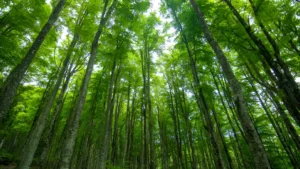

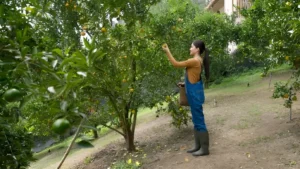
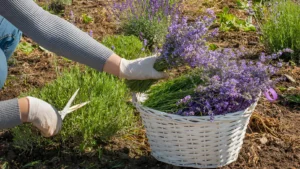
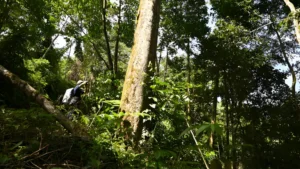

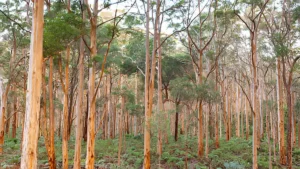



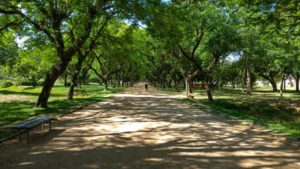

Leave your comment